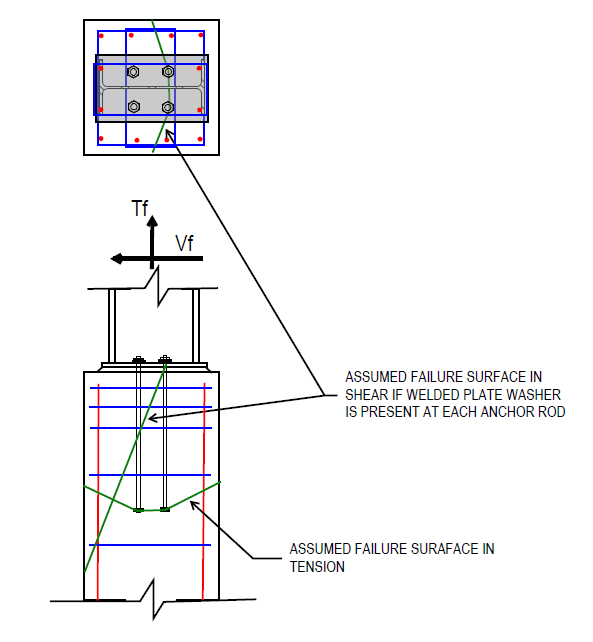In designing baseplate connection to concrete utilizing the Widianto paper 'Design of Anchor Reinforcement in Concrete Pedestals' or Annex/Appendix D, is there a need to check the interaction of Tf/Tr + Vf/Vr <= 1.2, where Tr=tension resistance based on reinforced concrete breakout surface, Vr=shear resistance based on reinforced concrete breakout surface or by STM, Tf and Vf = factored tension and shear forces, respectively? Wondering how the more experienced people of this forum typically handle such cases where the design is governed by reinforced breakout surfaces in both tension and shear.
Tek-Tips is the largest IT community on the Internet today!
Members share and learn making Tek-Tips Forums the best source of peer-reviewed technical information on the Internet!
-
Congratulations cowski on being selected by the Eng-Tips community for having the most helpful posts in the forums last week. Way to Go!
Reinforced Concrete Breakout in Tension and Reinforced Concrete Breakout in Shear Interaction
- Thread starter r-struct
- Start date

